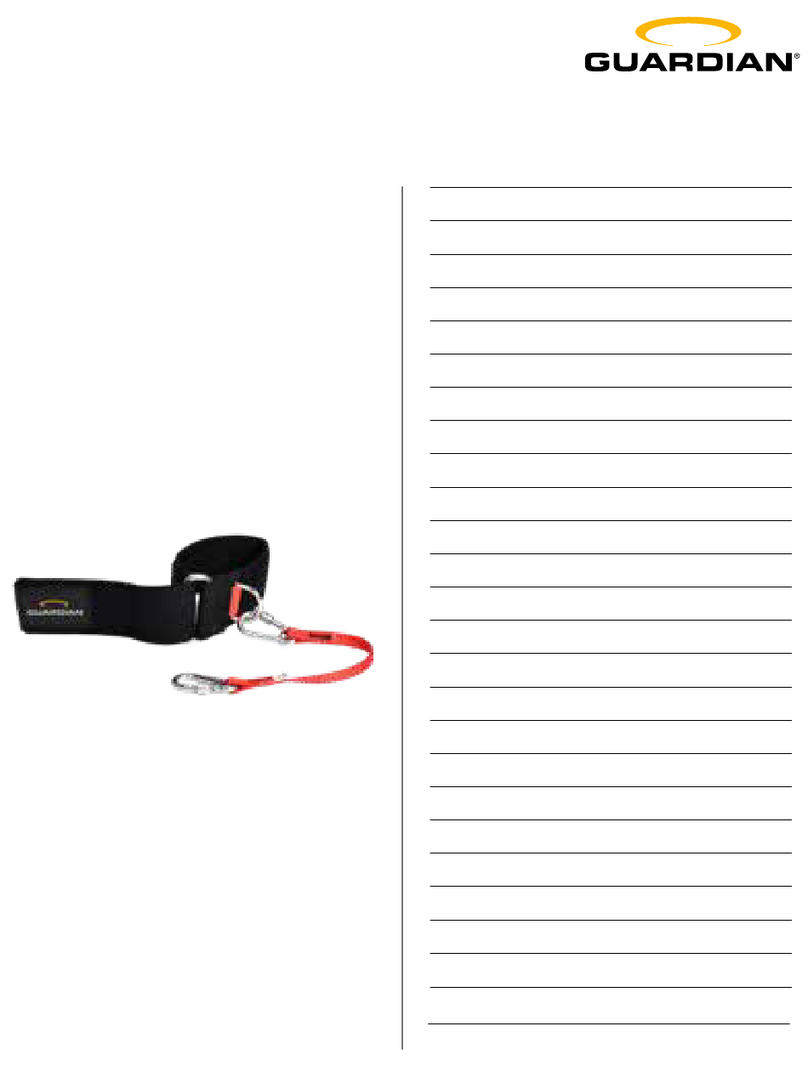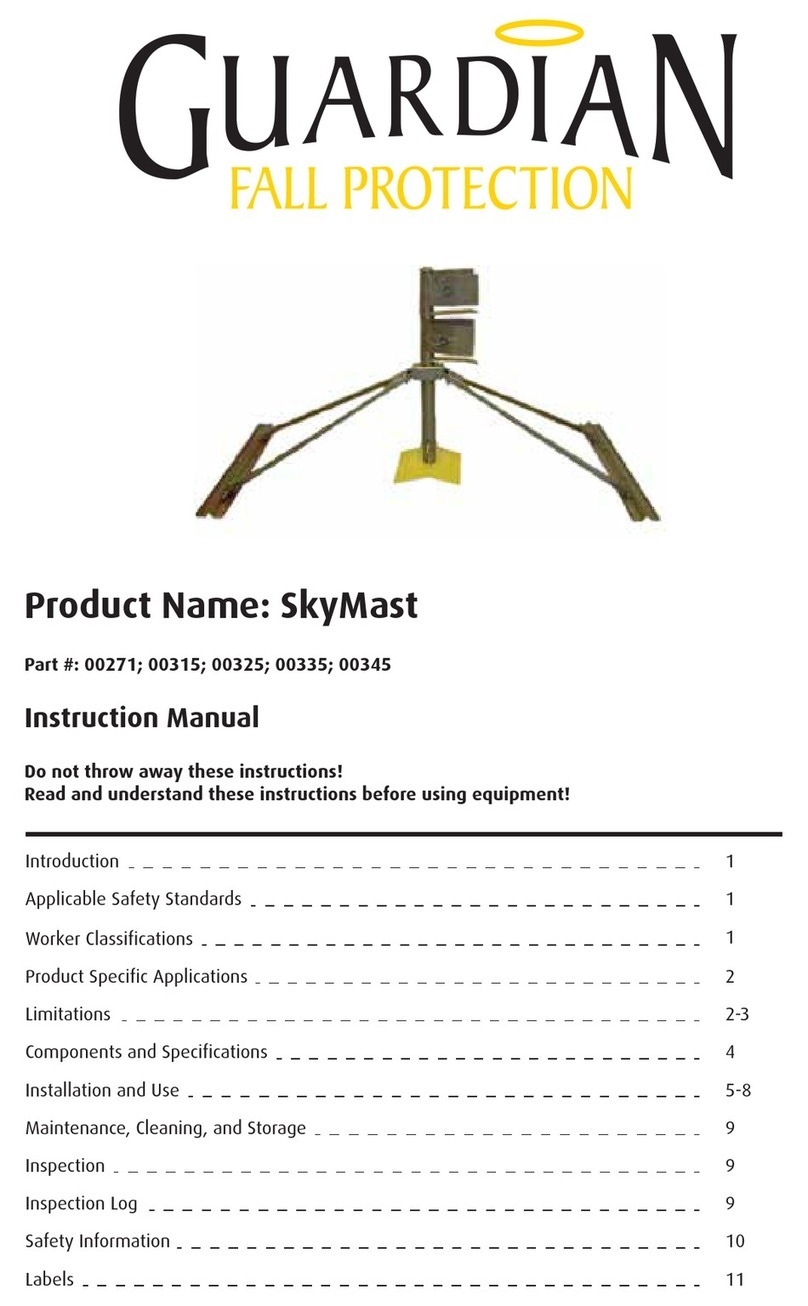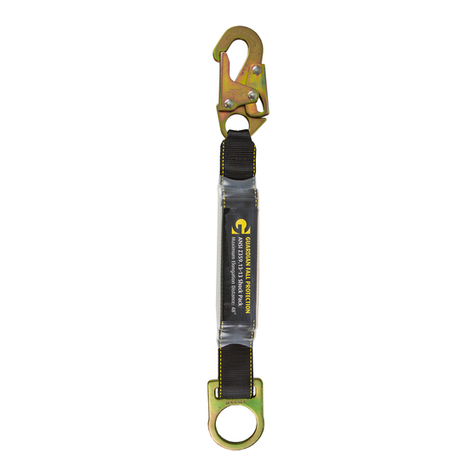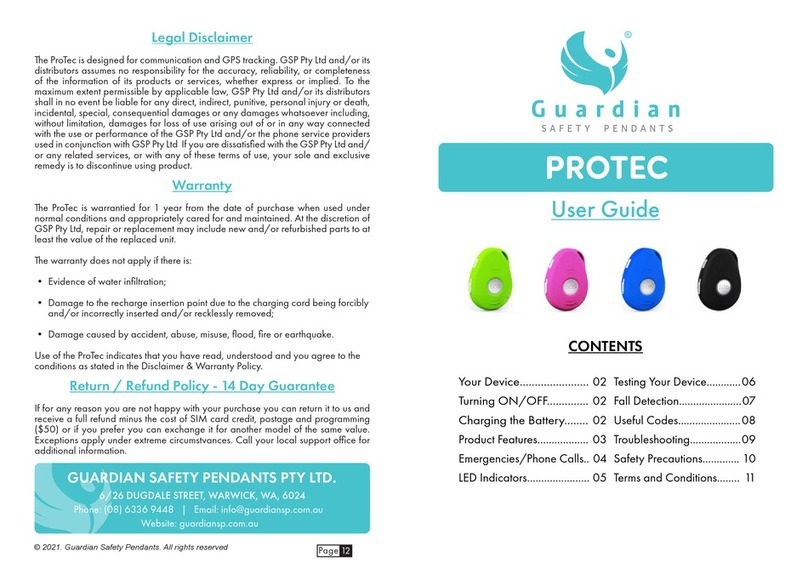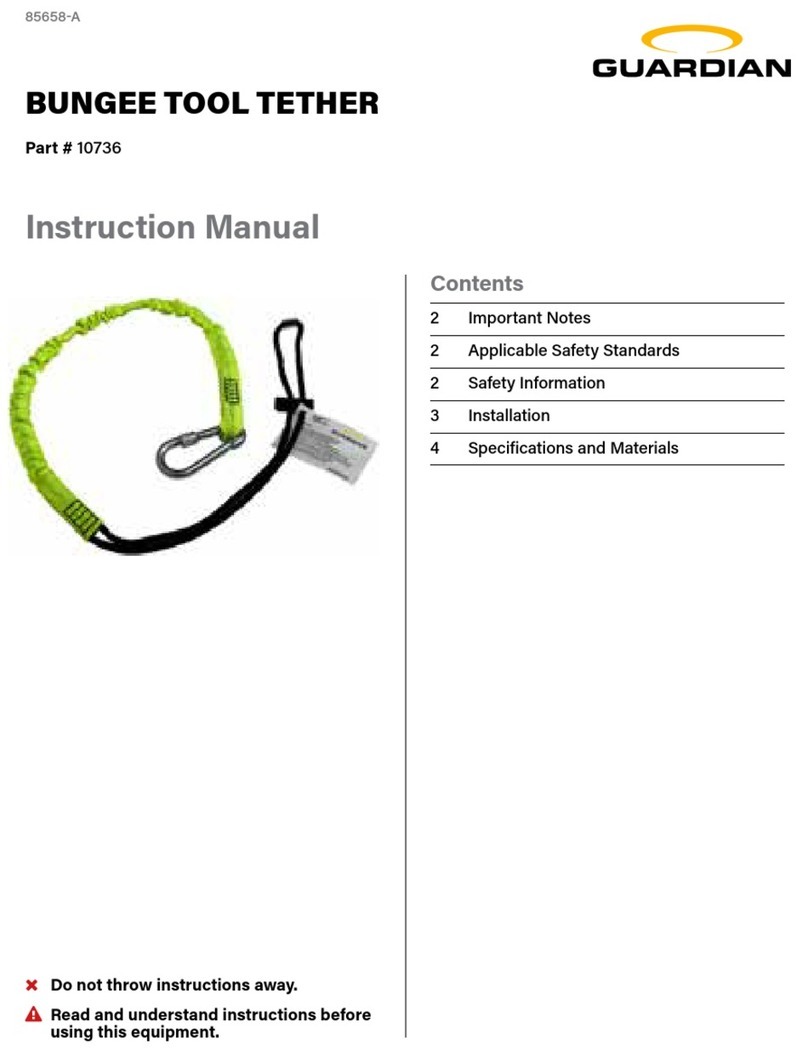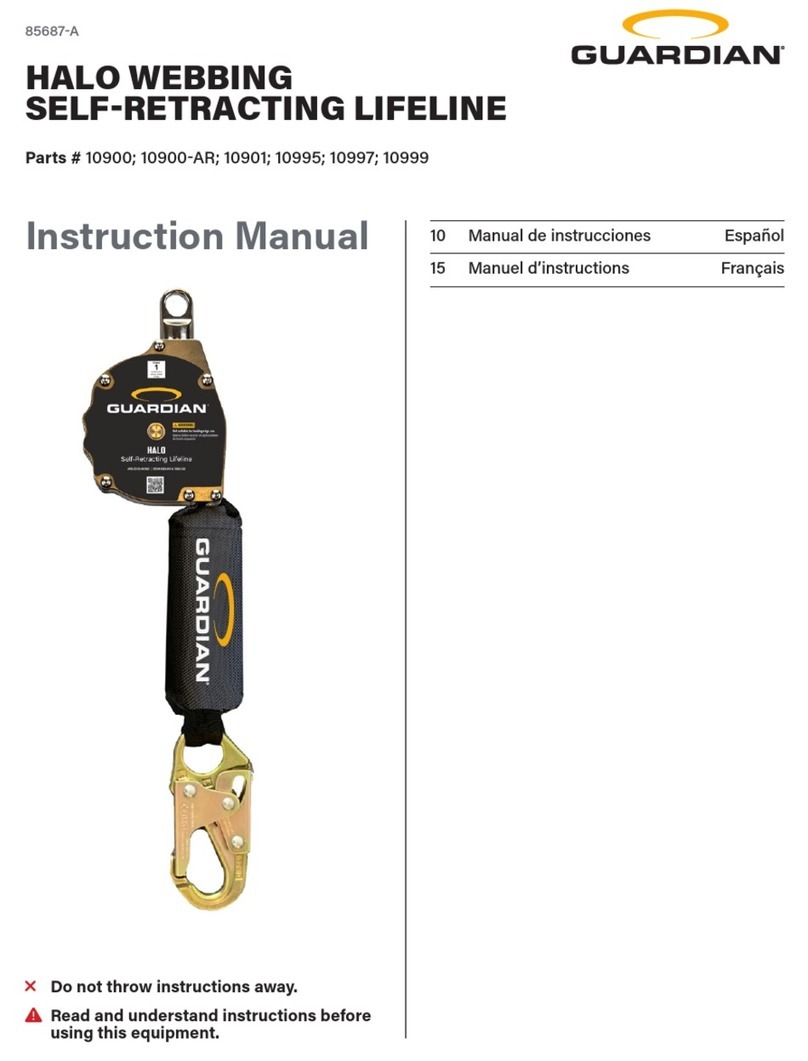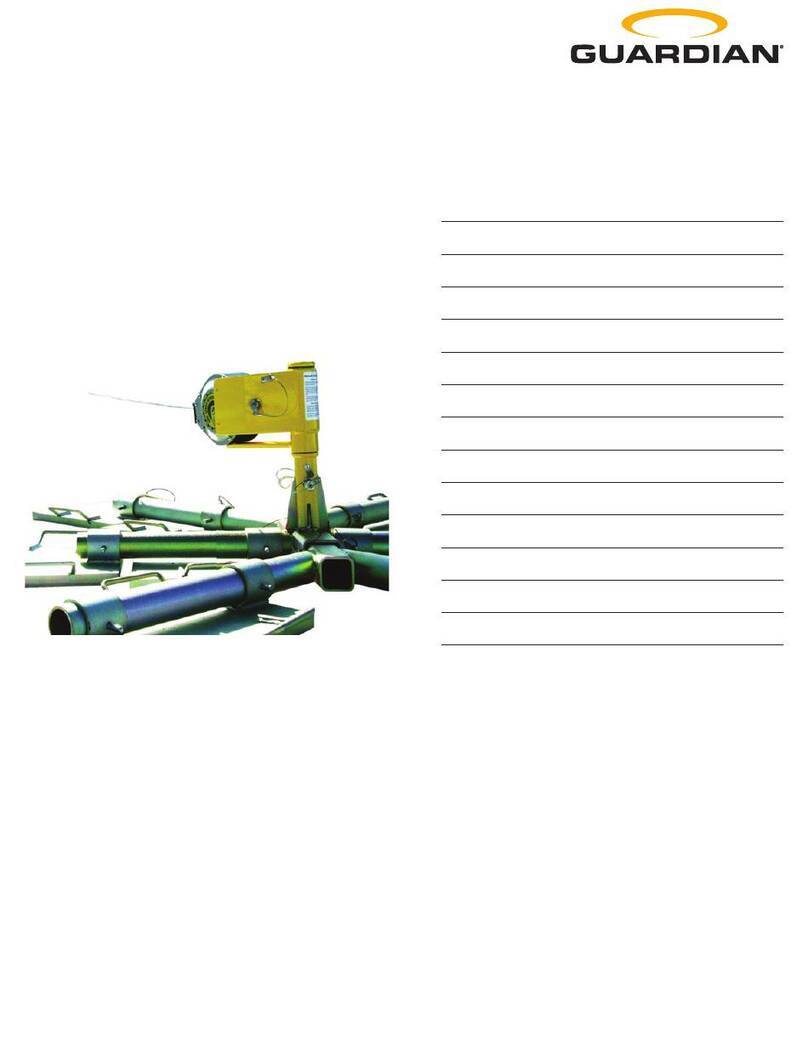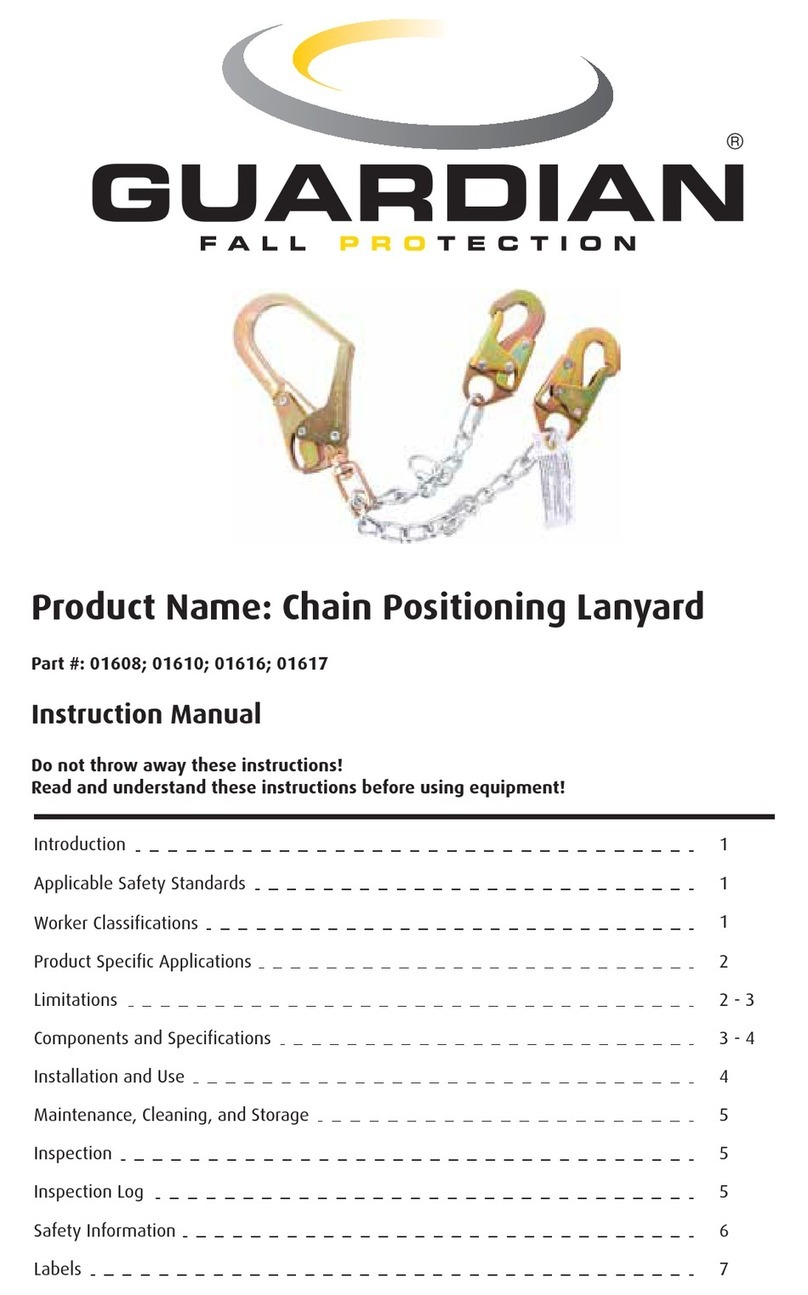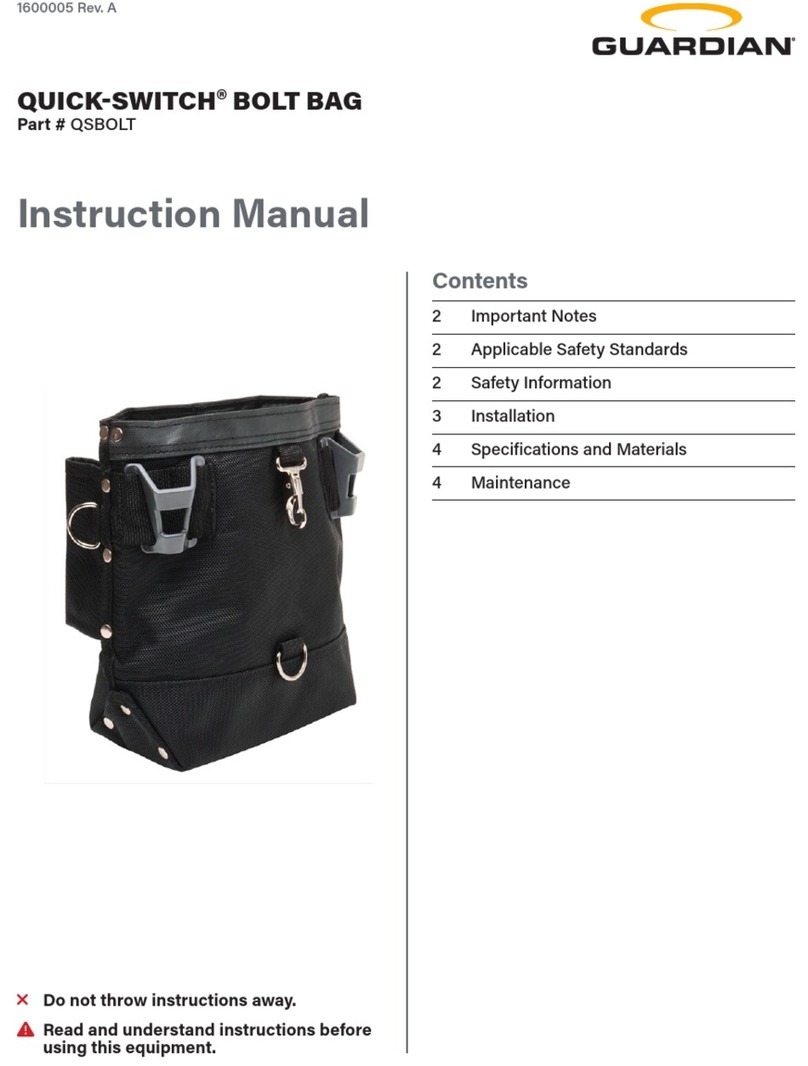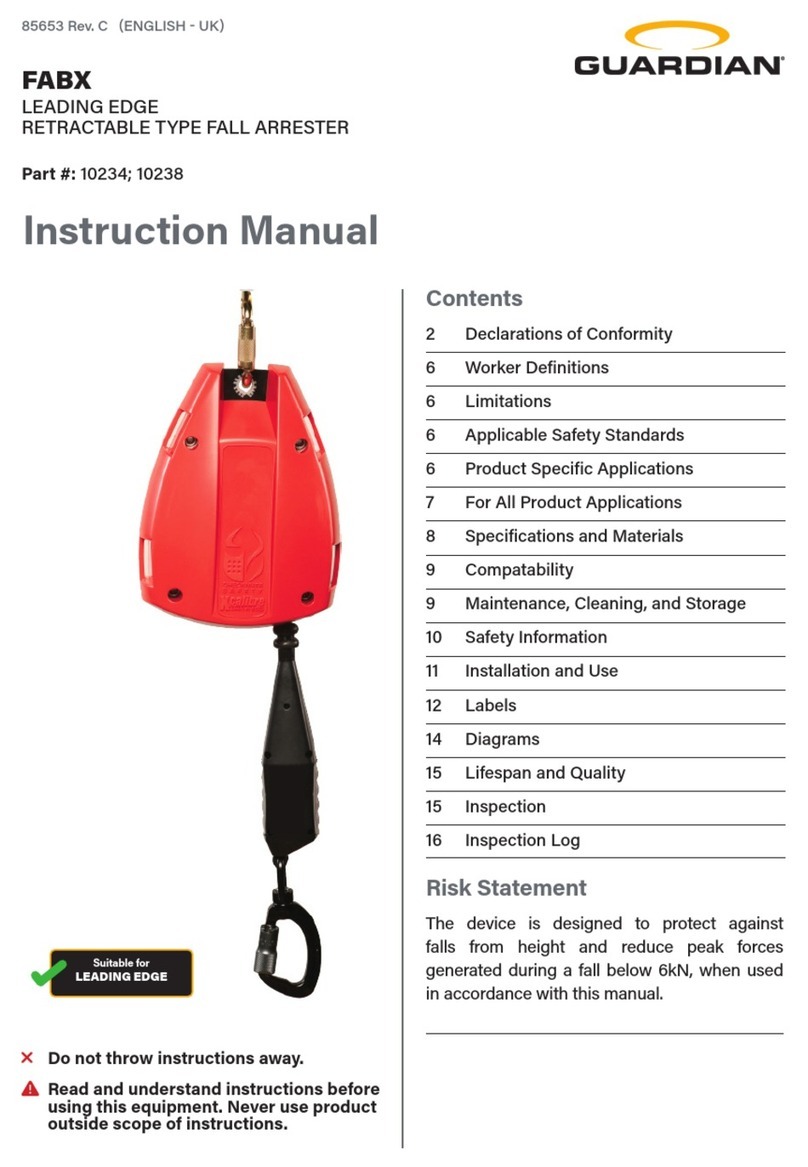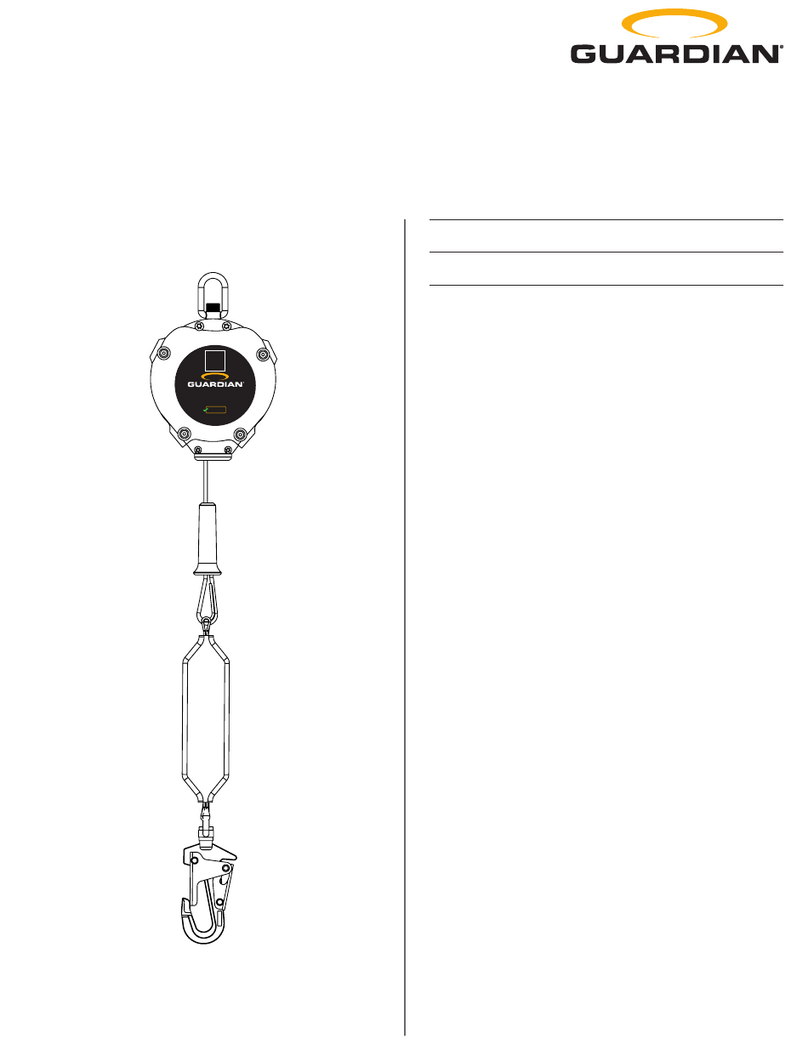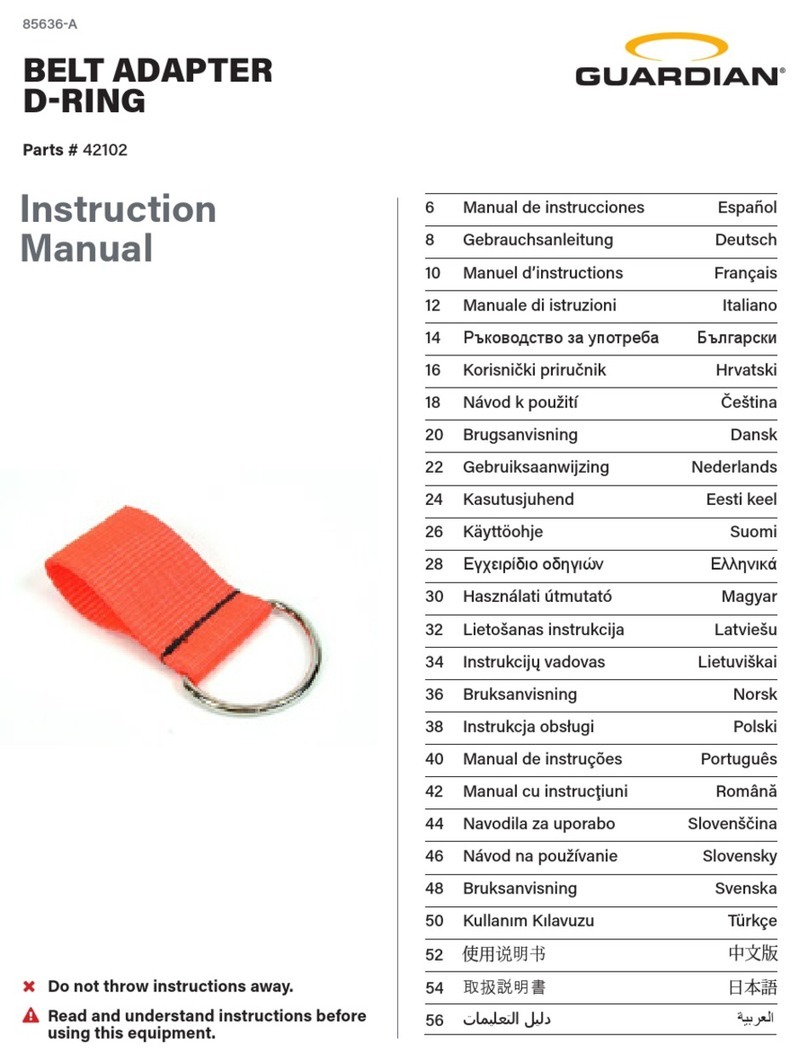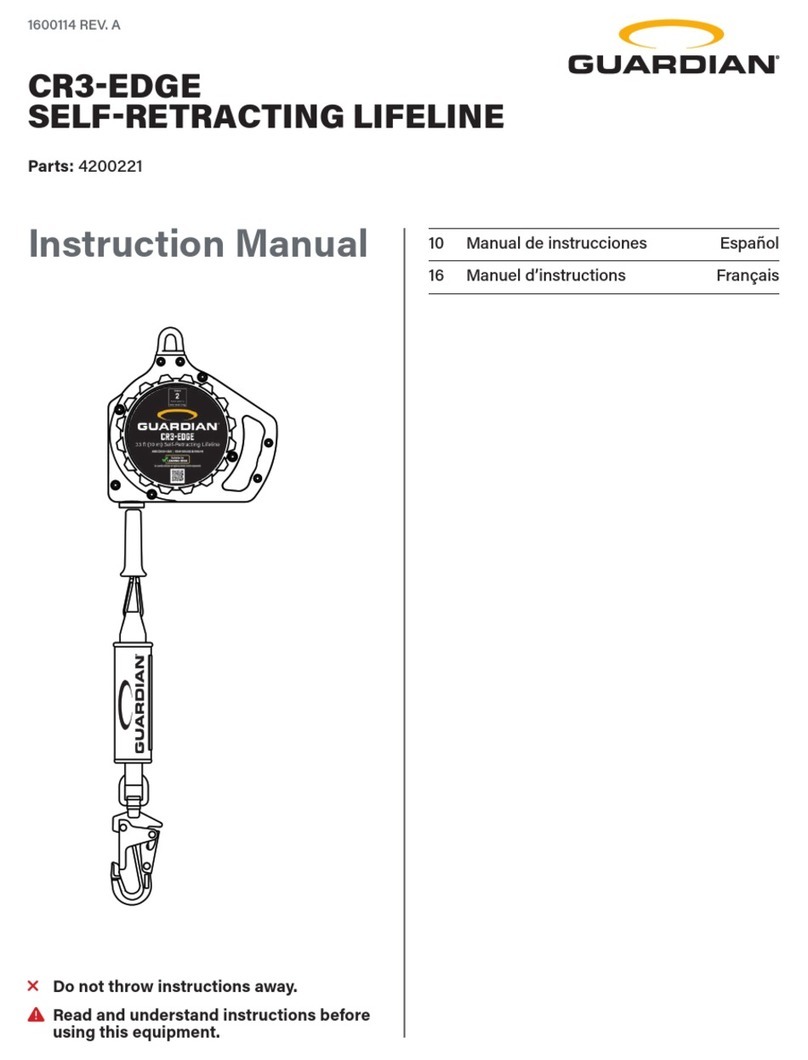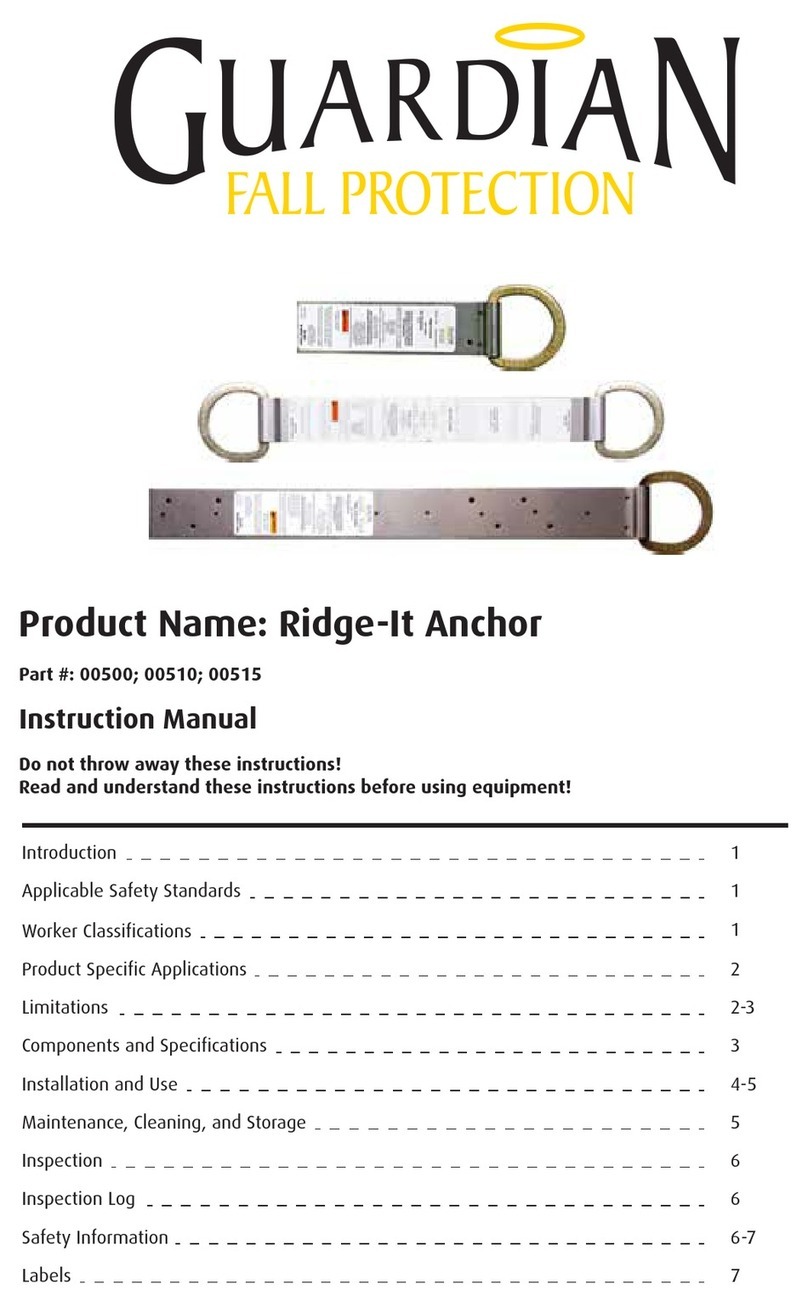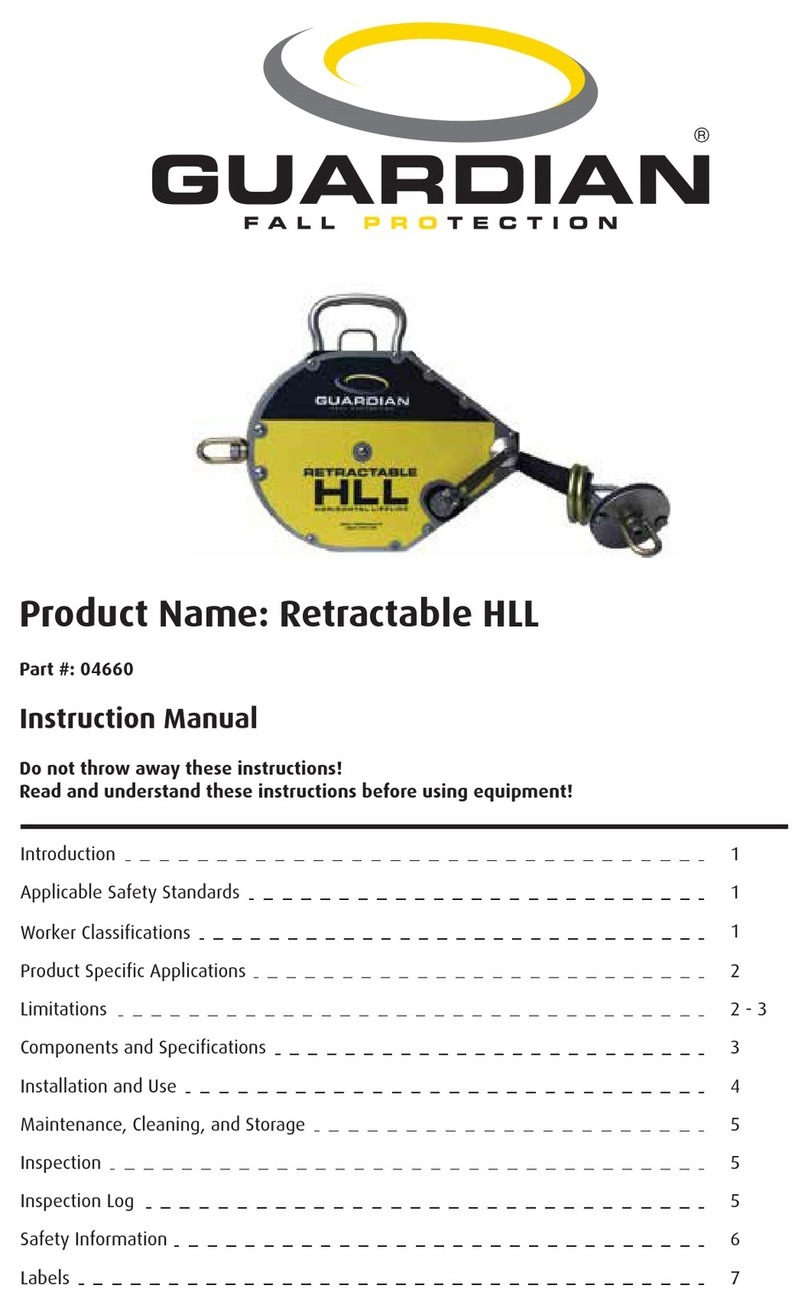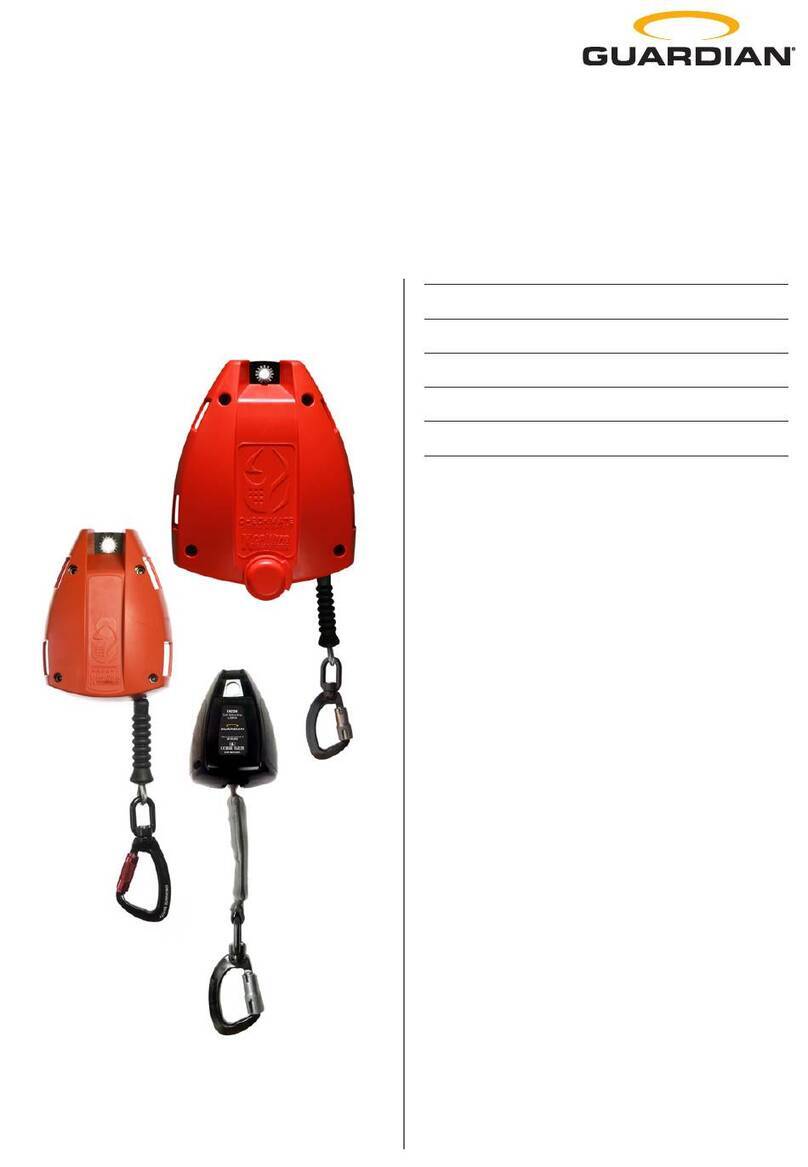
4
Product Specific Applications
May be used to support a MAXIMUM 1 in
a Personal Fall Arrest System (PFAS)
for use in Fall Arrest applications only
when used in combination with an energy
absorbing device rated to reduce fall arrest forces
to no greater than 6kN. Maximum free fall is 2m,
or 4m if used in combination with equipment
explicitly certified for such use. Certified fall arrest
connection points are clearly marked with an “A.”
The Dorsal D-ring should always be the primary
attachment point, although connection to Sternal
D-ring is permitted in cases where free fall is
suiciently limited, such as for Work Positioning,
Ladder Climbing, or Rescue.
D-ring: Dorsal, Sternal
May be used in Restraint applications.
Restraint systems prevent a worker from
reaching the leading edge of a fall hazard.
Always account for fully deployed length of
lanyard/RTFA. No free fall is permitted. Restraint
systems may only be used on surfaces with
slopes up to 18.4 (4/12 - vertical/horizontal).
D-rings: Dorsal, Side
May be used in Work Positioning
applications. Work Positioning systems
allow a worker to be supported while in
suspension and work freely with both hands. No
free fall is permitted. Anchor point must be at or
above side D-rings. Always consider the need for
a backup fall arrest system if the potential exists
for exposure to a fall.
D-ring: Side (pairs only)
RESCUE/CONFINED SPACE:
May be used in Rescue/Confined Space
applications. Rescue systems function to
safely recover a worker from a confined location
or after exposed to a fall. There are various
configurations of Rescue systems depending on
the type of rescue.
D-ring: Dorsal, Chest
For All Product Applications
Maximum user weight (including all
clothing, tools, and equipment) is 150 kg.
Anchorage point in PFAS must be rated to
withstand minimum 12kN load and be
EN 795:2012 or 1997+A1:2000 approved.
The jobsite Competent Person (CP) must ensure
that there are sufficiently strong and accessible
anchorage points in the working environment.
Anchorages should be overhead when possible
and the area beneath and around them should
be clear of obstruction and sharp edges. Always
attach to an anchorage that is as close to the
point of work and as high above head as possible
without restricting free movement. The user
should be aware at all times of which attachment
points to use; if not immediate obvious they must
seek confirmation from the CP. Always ensure
that the means of attachment to the anchorage is
secure before beginning work.
Worker Definitions
Competent Person Definition
The job site safety supervisor, referred to in this
manual as the Competent Person (CP), must be
a highly trained and experienced person who
is assigned by the employer to be responsible
for all elements of the fall safety program; this
includes, but is not limited to, program regulation,
management, and application. The CP must be
proficient in identifying existing and predictable
fall hazards, and must have the authority to stop
work to eliminate hazards or otherwise promote
safe and compliant work practices.
Authorised Person Definition
A person who is assigned by their employer to
work around or be subject to potential or existing
fall hazards.
